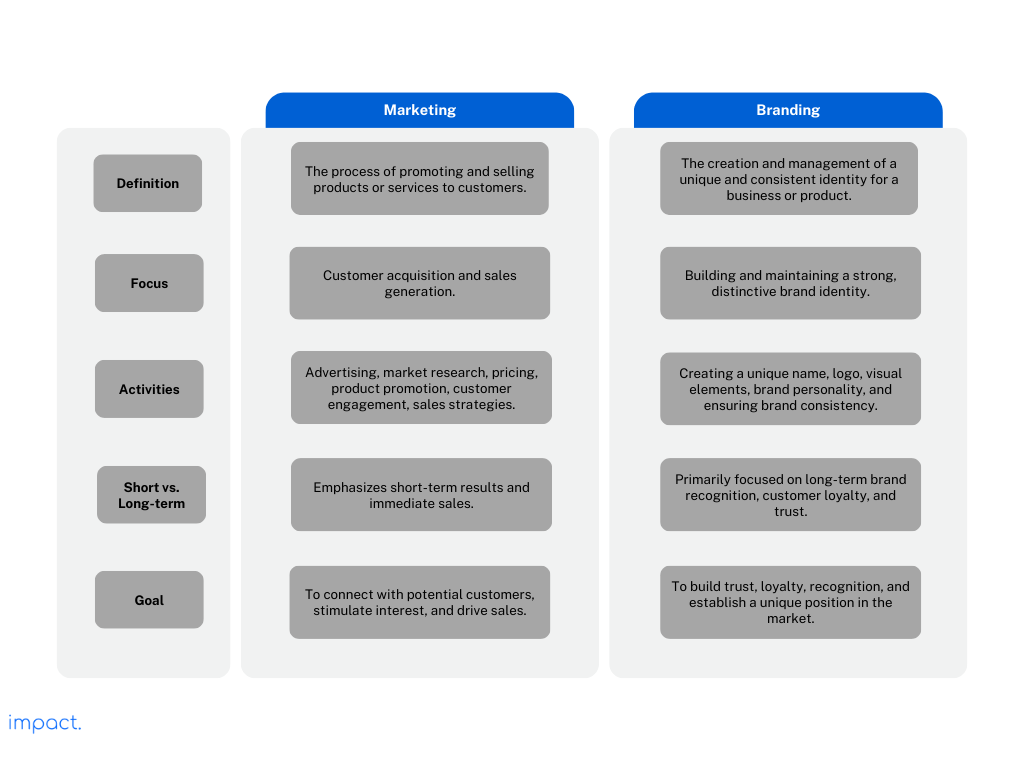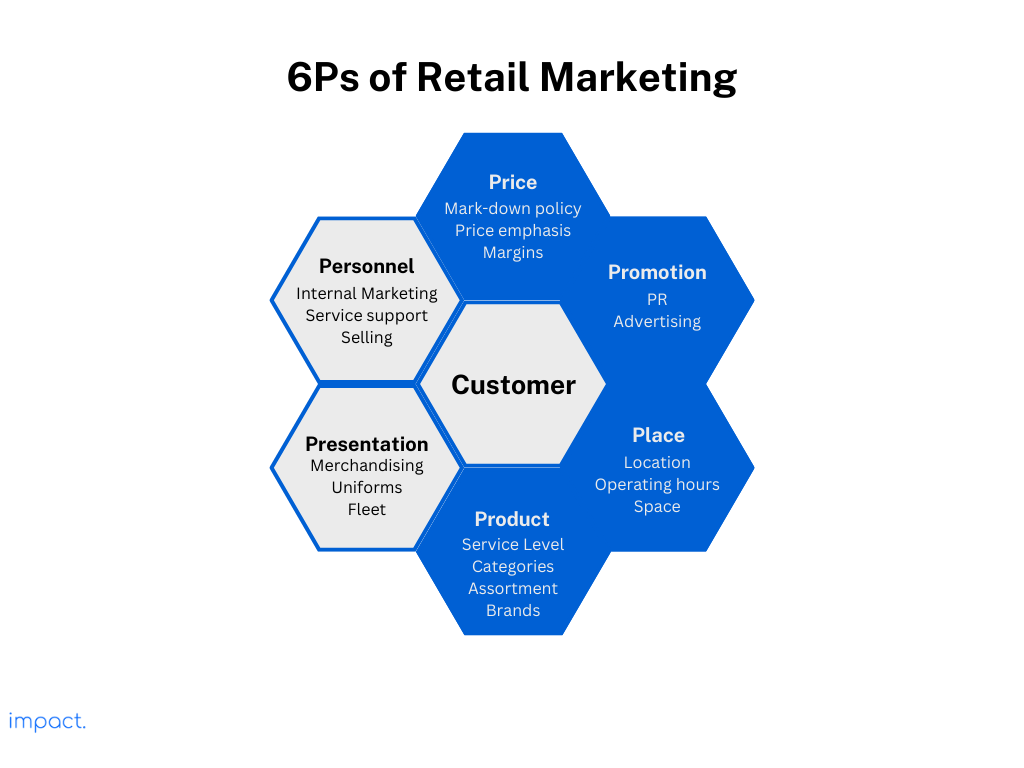Blue Ocean Strategy: 7 Steps to Ignite Business Transformation
“Blue Ocean Strategy,” by W. Chan Kim and Renée Mauborgne, is a pioneering blue ocean…
Insight Team
January 1, 2025In our previous chapter, we delved into the intricacies of retail branding, exploring its crucial role in shaping a retail business’s identity and perception. We learned how effective branding can set your store apart from the competition and create a distinct, memorable presence in the minds of consumers.
Building on that foundation, we now focus on another cornerstone of business – retail marketing. If you’re looking to boost your sales, marketing is the key to achieving that objective.
Marketing helps you tell people about your products and why they should buy them. They help address customers’ lingering doubts about your products or services and minimize the dreaded “buyer’s remorse” that affects 77% of shoppers after making a purchase.
In this chapter, we’ll dive into retail marketing and how to use different strategies to boost your sales. From online ads to in-store deals, we’ll cover the tips and tricks to make your business shine and keep customers happy. Whether you run a physical store, an online shop, or both, these marketing ideas can help you stand out in the crowded retail world.
Retail marketing is a part of marketing about selling products to customers through retail channels like stores or online shops. It involves advertising, pricing, and connecting with customers to get them interested in buying.
Marketing and branding are often confused, but they’re not the same. Marketing focuses on making people aware of your products and teaching them about what you offer. On the other hand, branding is about shaping your brand’s identity, like its values, personality, and visual elements.

Marketing and branding, while distinct, share a close relationship and collaborate to achieve specific objectives. Think of them as two integral parts of the same puzzle, working hand in hand to create a harmonious synergy.
Read more: Elevate Your Retail Branding for Sales Success
We usually discuss the “4Ps” when discussing traditional marketing mix: Price, Promotion, Place, and Product. But in retail, we add two more essential elements to the mix, making it the “6Ps.” These extra two Ps are Presentation and Personnel.
Your retail marketing campaign should focus on all these factors to ensure you’re on the right track. Let’s break them down:

Product:
This component of a marketing strategy is what you’re selling. Ensure you have the right products that meet your customers’ needs.
Price:
The price is how much you charge for your product. It depends on how much it costs you to make the product, your marketing promotions, and how long you plan to sell it. Your pricing plan should match what your customers are willing to pay and what your competitors charge.
Place:
“Place” means the location of your store, whether it’s a physical shop or an online store. Choose the right spots for your business, whether a physical store or a website. Being at the top of Google search results is as essential as having a good location for a physical store.
Promotion:
This element of marketing is about how to reach people about your product. Retail promotion means getting in touch with customers and making them know your brand. If people don’t know you, they won’t buy from you.
Personnel:
Your employees play a significant role in how your business is perceived. They create the first impression that either brings in customers or pushes them away. Everyone involved, whether directly or indirectly, can affect sales and how happy your customers are. So, make sure to train your staff well and make sure they give outstanding service.
Presentation:
The final “P” in marketing is how your product appears to your customers. It includes your packaging, messaging, and communication to customers. The presentation needs to be eye-catching and well-arranged to attract customers.
Read more: Choosing the Right Retail Location in 5 Steps
To grasp the importance of retail marketing for your business, let’s dig into how it can boost your growth and success in today’s competitive market.
Retail marketing aims to bring new customers to your business and keep them returning. Retail marketing uses strategies like promotions, advertising, and making your store look appealing to attract customers to your physical store or online shop.
This extra attention and traffic can boost your sales, making your business more money and growing. Whether you use social media, search engine optimization (SEO), partnerships, or paid ads, they are all ways to make more money for your business.
In retail marketing, how you set up your store and make your products look matters. It can make a big difference in how much you sell. Using strategies like making your products look good and putting them in the right places can attract more customers and make them more likely to buy.
These strategies include arranging products nicely, using eye-catching displays, and making the store feel inviting for customers. It’s all about making the shopping experience enjoyable, which, in turn, can lead to more sales. So, by investing in these strategies, you can boost your sales and have a more successful business.
Retail marketing is like having a treasure trove of information about your customers. This data helps you understand your customers better and customize your marketing to suit their needs.
When you use customer data, you can create personalized customer experiences and build long-lasting relationships. More than 70% of customers are more likely to shop with you again if you give them offers that match what they like or want. So, gathering and using customer data is smart for your business.
Retail marketing channels, like social media and email, offer direct customer communication. This two-way interaction builds trust and lets you quickly address customer concerns and feedback.
Effective retail marketing promotes this back-and-forth between businesses and consumers. This open line of communication builds trust and loyalty, which can lead to repeat business and positive word-of-mouth marketing.
Retail marketing involves various methods to attract people to buy products and services. Here are the three main types of retail marketing:
In-store marketing aims to enhance the shopping experience within physical retail spaces. It employs strategies to captivate, engage, and sway shoppers while they’re in the store. This marketing approach is especially vital for brick-and-mortar retailers.
Examples of in-store marketing include:
Traditional marketing uses offline channels to connect with potential customers. Despite the growth of online marketing, these offline methods remain valuable for certain retail businesses and customer demographics.
Examples of traditional marketing include:
Digital marketing involves promoting your store or products online, including organic and paid efforts. A comprehensive digital marketing strategy should incorporate multiple online platforms.
Examples of digital marketing include:
Read more: Unlocking Growth: 19 Traction Channels for Business Success
Retail marketing is dynamic, and combining strategies can be highly effective. Here are nine retail marketing strategies to consider:
Collaborate with brands that go well with your products. This strategy helps both companies reach more people and grow their customer groups. When you team up with respected companies, it can build trust in your brand. Joint promotions or events can also get your brand in front of more people. It’s a win-win situation for both parties involved.
To better plan your retail marketing strategy, gather customer feedback through surveys. You can include surveys on your company website, product purchase emails, and in-store receipts. This feedback helps you understand what your customers like and want. It lets you see trends in sales and consumer habits, helping you make your products and customer experience better.
When you give discounts, have sales, or run promotions, it grabs the attention of shoppers looking for good deals. They might end up buying more on the spot. Consider having sales during different seasons or clearance events to get even more people interested.
Give back to your regular customers with discounts or special access. This program makes them want to come back to your store. Plus, when you have a customer loyalty program, you can create profiles of your shoppers. These profiles help you know what products they like and make your marketing more personal.
Remarketing means tailoring your marketing to people based on their past purchases. It includes sending emails with discounts or promotions for new products or getting people to subscribe for regular purchases. You can also use remarketing to reach people who’ve shown interest in your products but didn’t buy them.
Selling in multiple places is essential for your business. To increase your sales, ensure a seamless shopping experience across all your sales channels. You must link your social media accounts and website to help customers find all your channels. This way, you can increase the chances of consumers to view your products. Remember to keep things consistent in your physical stores, websites, mobile apps, and social media.
Improve your online presence for better search engine visibility. This approach is essential for attracting online customers, especially those searching for products in your area. By optimizing for local searches, you can increase the likelihood of your company appearing on the first page of results when customers look for nearby products.
Host in-store or online events to bring people to your store. These events also give you a reason to send out marketing materials. You can launch new products, hold workshops, or celebrate seasons. You can even offer special deals for the first visitors or buyers during these events. Use them to show off your products and get more people to notice your store.
In your retail marketing strategy, partner with influencers who match your brand and can promote your products or services to their followers. Influencers can help you expand your reach. You don’t have to go for the most prominent names; smaller influencers with a few thousand followers can also be influential. Look for local bloggers or content creators who can promote your store and products to your target audience.
In this chapter, we’ve discussed the importance of retail marketing in growing your business. Marketing is the key to boosting sales and building trust with customers. It helps you tell people why they should buy your products and reduces the chances of customers regretting their purchases.
It’s crucial to grasp that branding and marketing are not separate; they can collaborate effectively. Flourishing businesses begin by understanding their brand identity and their target audience. Then, they employ marketing to convey that brand to the market. This alignment ensures that marketing activities harmonize with the brand’s fundamental values and message.
Our next chapter will discuss inventory management, another crucial part of running a successful retail business. We’ll explore the strategies to manage your stock effectively, reduce waste, and always have the right products to meet customer demand.
Impact Insight Team
Impact Insights Team is a group of professionals comprising individuals with expertise and experience in various aspects of business. Together, we are committed to providing in-depth insights and valuable understanding on a variety of business-related topics & industry trends to help companies achieve their goals.
75% of digital transformation projects fail. Take the right first step by choosing a reliable long-term partner.
